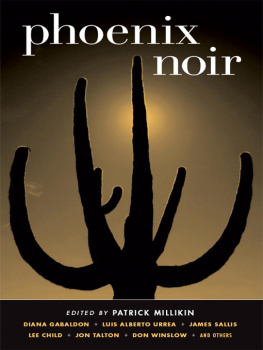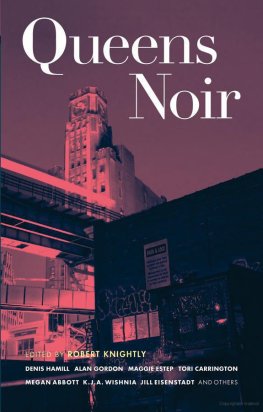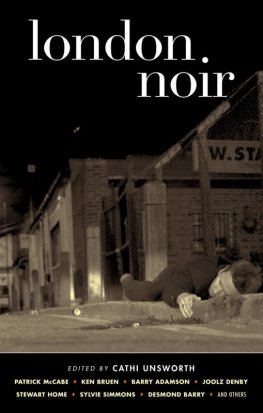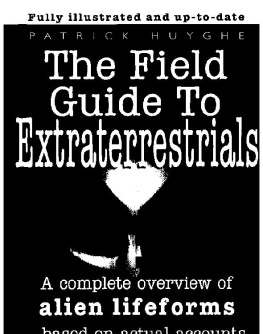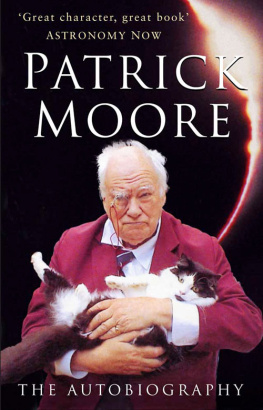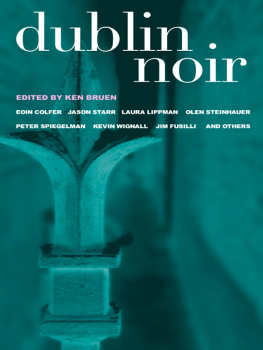
This collection is comprised of works of fiction. All names, characters, places, and incidents are the product of the authors imaginations. Any resemblance to real events or persons, living or dead, is entirely coincidental.
Published by Akashic Books
2009 Akashic Books
Series concept by Tim McLoughlin and Johnny Temple
Phoenix map by Sohrab Habibion
ePub ISBN-13: 978-1-936-07041-1
ISBN-13: 978-1-933354-85-9
Library of Congress Control Number: 2009922933
All rights reserved
Akashic Books
PO Box 1456
New York, NY 10009
info@akashicbooks.com
www.akashicbooks.com
ALSO AKASHIC NOIRS SERIES:
Baltimore Noir, edited by Laura Lippman
Boston Noir, edited by Dennis Lehane
Bronx Noir, edited by S.J. Rozan
Brooklyn Noir, edited by Tim McLoughlin
Brooklyn Noir 2: The Classics, edited by Tim McLoughlin
Brooklyn Noir 3: Nothing but the Truth
edited by Tim McLoughlin & Thomas Adcock
Chicago Noir, edited by Neal Pollack
D.C. Noir, edited by George Pelecanos
D.C. Noir 2: The Classics, edited by George Pelecanos
Delhi Noir(India), edited by Hirsh Sawhney
Detroit Noir, edited by E.J. Olsen & John C. Hocking
Dublin Noir(Ireland), edited by Ken Bruen
Havana Noir(Cuba), edited by Achy Obejas
Istanbul Noir(Turkey), edited by Mustafa Ziyalan & Amy Spangler
Las Vegas Noir, edited by Jarret Keene & Todd James Pierce
London Noir(England), edited by Cathi Unsworth
Los Angeles Noir, edited by Denise Hamilton
Manhattan Noir, edited by Lawrence Block
Manhattan Noir 2: The Classics, edited by Lawrence Block
Mexico City Noir(Mexico), edited by Paco I. Taibo II
Miami Noir, edited by Les Standiford
New Orleans Noir, edited by Julie Smith
Paris Noir(France), edited by Aurlien Masson
Portland Noir, edited by Kevin Sampsell
Queens Noir, edited by Robert Knightly
Rome Noir(Italy), edited by Chiara Stangalino & Maxim Jakubowski
San Francisco Noir, edited by Peter Maravelis
San Francisco Noir 2: The Classics, edited by Peter Maravelis
Seattle Noir, edited by Curt Colbert
Toronto Noir(Canada), edited by Janine Armin & Nathaniel G. Moore
Trinidad Noir, Lisa Allen-Agostini & Jeanne Mason
Twin Cities Noir, edited by Julie Schaper & Steven Horwitz
Wall Street Noir, edited by Peter Spiegelman
FORTHCOMING:
Barcelona Noir(Spain), edited by Adriana Lopez & Carmen Ospina
Copenhagen Noir(Denmark), edited by Bo Tao Michaelis
Haiti Noir, edited by Edwidge Danticat
Indian Country Noir, edited by Liz Martnez & Sarah Cortez
Lagos Noir(Nigeria), edited by Chris Abani
Lone Star Noir, edited by Bobby Byrd & John Byrd
Los Angeles Noir 2: The Classics, edited by Denise Hamilton
Moscow Noir(Russia), edited by Natalia Smirnova & Julia Goumen
Mumbai Noir(India), edited by Altaf Tyrewala
Orange County Noir, edited by Gary Phillips
Philadelphia Noir, edited by Carlin Romano
Richmond Noir, edited by Andrew Blossom,
Brian Castleberry & Tom De Haven
TABLE OF CONTENTS
P hoenix is a young city, even by Arizona standards. The desert metropolis, easily the largest in the Southwest today, wasnt established until 1867, much later than Tucson, Prescott, and other Arizona towns. As the legend goes, fortune-seeker and former Confederate soldier Jack Swilling noticed the ruins of the extensive Hohokam canal system while passing through the Salt River Valley and recognized the economic potential in getting the irrigation ditches up and running again. Centuries earlier, the Hohokam Indians had disappeared, no one really knows why, but the elaborate canal system they left behind provided the foundation upon which a new city would arise. Swilling battled alcoholism and opiate addiction and would later die in Yuma Territorial Prison under suspicion of highway robbery (he was posthumously cleared of the charge).
Although historians debate whether Swilling or fellow pioneer Darrell Duppa first named the town Phoenix, the idea it evoked, a new civilization rising out of the ashes of a previous culture, is revealing. It implied new beginnings, a place where hard-working young families from the East could start over anew. Of course, it wasnt always such a great deal for the nearby Pima and Maricopa Indians.
Early boosters promoted Phoenix as a desert paradise, a lush resort town where health-seekers could enjoy the benefits of clean dry air and warm winter weather. The burgeoning city was quickly so infested with lungerspeople suffering from tuberculosis and other respiratory ailmentsthat alarmed citizens pressured advertisers to downplay the palliative effects of the environment. Magazine ads from the 40s and 50s show squeaky clean white families enjoying the relaxed pace of desert living: children playing in the sunshine, Dad practicing his golf swing or sipping a highball by the swimming pool.
From the very beginning, Phoenix has always had a darker side. It is a city founded upon shady development deals, good ol boy politics, police corruption, organized crime, and exploitation of natural resources. Close proximity to the Mexican border makes the city a natural destination spot for illegal trafficking of all kindsnarcotics, weapons, humans. These days, Americas Toughest Sheriff Joe Arpaio routinely makes headlines for his vigilante-style hunting of illegal aliens and his casual disregard of human rights. And he keeps getting reelected.
Modern-day Phoenix is a textbook case of suburban sprawl gone unchecked. Endless cookie-cutter housing developments, slapped up on the cheap, metastasize outward into the desert, soaking up energy and water that we dont really have. All of that concrete and asphalt traps the heat, raising temperatures to apocalyptic extremes. During the summer, these heat bubbles can be lethal (during one record-breaking month in 2004, fourteen people died from heat exposure, most of them homeless).
The city recently overtook Philadelphia to become the fifth largest city in the country, and the Phoenix metro area now rivals Los Angeles County in size. As in all major cities, the gulf between Phoenixs haves and have-nots continues to widen with the steady decline of the middle class. The affluent northeast valleyScottsdale, Paradise Valley, Carefreehas little in common with the sunburned working-class neighborhoods of South Phoenix and much of the west valley, though the developers are trying to change that with gentrification. The population of the city continues to grow and morph, but the legacy of the early ward system, in which much of the political representation resided in the wealthierand whiterfirst and second wards, lives on to this day.
What does all this mean? Crime, and lots of it. The stories collected in this anthology provide a revealing glimpse of a dark underbelly that the tourists rarely see. Novelist and veteran journalist Jon Talton provides a masterly portrayal of WWII-era Phoenix, back when The Deuce, our old skid row, was in its heyday and the citys corrupt power structure already firmly entrenched. Edgar Awardwinning author Megan Abbott offers a stylish interpretation of the notorious Bob Crane murder, and brilliantly captures the mellow, sun-baked vibe of Scottsdale during the 1970s. Diana Gabaldon takes the lid off contemporary Scottsdale with a dark and sordid tale combining such disparate elements as squirrel genocide, an illegal orchid smuggling operation, and a murdered Welsh botanist. Investigative reporter Robert Anglen gives us a tour de force of noir depravity about a career loser from East Mesa who is forced to live his miserable life backwards. Up-and-coming Phoenix scribe Kurt Reichenbaugh delivers the goods with a lean and nasty tale of betrayal along downtowns storied Grand Avenue. Longtime Phoenicians will dig Gary Phillipss contribution, in which L.A. detective Ivan Monk comes to town to investigate some loose ends surrounding the early-70s murder of a local soul singer. The story was inspired by the real-life slaying of Arlester Dyke Christian of funk/R&B group Dyke and the Blazers, whose big hit Funky Broadway few realized was based on the main drag in South Phoenix. And then theres Navajo writer Laura Tohes bad-ass riff on the femme fatale convention when her womanizing protagonist meets his match with a lady who just aint human. This is but a sampling of the dark and diverse tales youll find in
Next page
